Europe, the continent of travelers’ dreams. There’s something undeniably magical about meandering down the amazing cities, such as Paris, Rome, Milan…
But How to make a perfect itinerary? Join me on a whirlwind 11-day trip for this entry of my blog series as I show you the best Europe has to offer.
Decide your next holiday and give you tantalizing tastes of each city you rename about visiting!
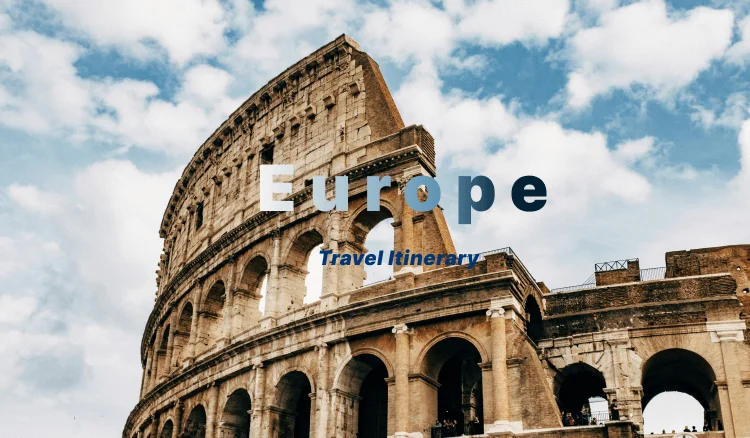
1. Considerations When Planning Your Europe Travel Route
Before you plan your trip to Europe, there are a few things you should consider to make the most of your visit.
Budget: Figure out what you can afford to spend on flights, accommodation, food, and activities.
Accommodation Choices: Deciding between a hostel, hotel, or vacation rental will depend on budget and taste.
Time of Year: Think about the weather and the tourist season. Peak seasons are busier and more expensive, while off-peak months are less crowded and cheaper.
Interests and Activities: Shape your trip around what you enjoy, whether it's history, art, nature, food – or anything else.
Health and Safety: Stay informed of any health updates or travel safety advice. Make sure you have travel insurance.
Travel Restrictions & Visas: Look into visa requirements and travel restrictions for every country you’ll be visiting.
2. Perfect 11-Day Europe Itinerary
Planning an 11-day jaunt around Europe is daunting and thrilling. Here’s everything you need to know to make sure you hit up some of Europe’s most acclaimed sights for a trip you won't forget in a hurry.
This itinerary covers a journey around Heidelberg, Paris, Rome, Venice, Milan, Interlaken and Stuttgart in 11 days.
Europe 11-Day Trip Table
Day | Destination | Recommended Activities |
1 | Heidelberg | Arrival, stroll |
2 | Paris | Versailles Palace, rest |
3 | Paris | Louvre Museum, Eiffel Tower |
4 | Paris | Cruise tour, Arc de Triomphe, Notre Dame Cathedral, fly to Rome at night |
5 | Rome | Vatican, St. Peter's Basilica, Castel Sant' Angelo |
6 | Rome | Pantheon, Roman Forum, Colosseum, Trevi Fountain, fly to Venice at night |
7 | Venice | Rialto Bridge, Academy Bridge, St. Mark's Square, Bridge of Sighs, Shipwreck Bookstore, take the train to Milan at night |
8 | Milan | Milan Cathedral, train to Interlaken in the afternoon |
9 | Interlaken | Jungfraujoch |
10 | Stuttgart | Mercedes-Benz Museum, University of Hohenheim |
11 | Stuttgart | Wander, departure |
Day 1: Heidelberg
On your first day, immerse yourself in the beautiful city of Heidelberg, a city as well known for its medieval history as its romantic beauty.
Where to Visit:
Heidelberg Castle: The ruined hilltop castle offers unparalleled views of the city below, and the architecture is stunning. Don't miss the gardens or the remarkable Great Barrel.
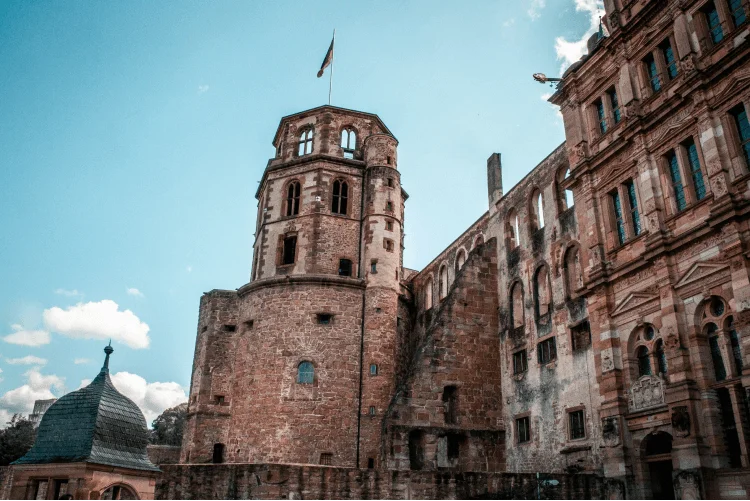
Old Town (Altstadt): Quaint cobbled streets are home to baroque architecture, independent shops, and lively cafes. Perfect for window shopping, exploring, or people watching.
Philosopher’s Walk: Follow the scenic riverfront path to get fantastic views over the city, Neckar River and more. A great place for a quiet stroll, or to take some beautiful pictures.
Karl Theodor Bridge: Also known as the Old Bridge, the pedestrianised stone bridge is decorated with statues and spans the breadth of the river. It's a great spot for photographs, and the bridge itself has historical intrigue.
Church of the Holy Spirit: The most important church in Heidelberg is also an architectural marvel. Stepping inside reveals a surprisingly peaceful ambiance.
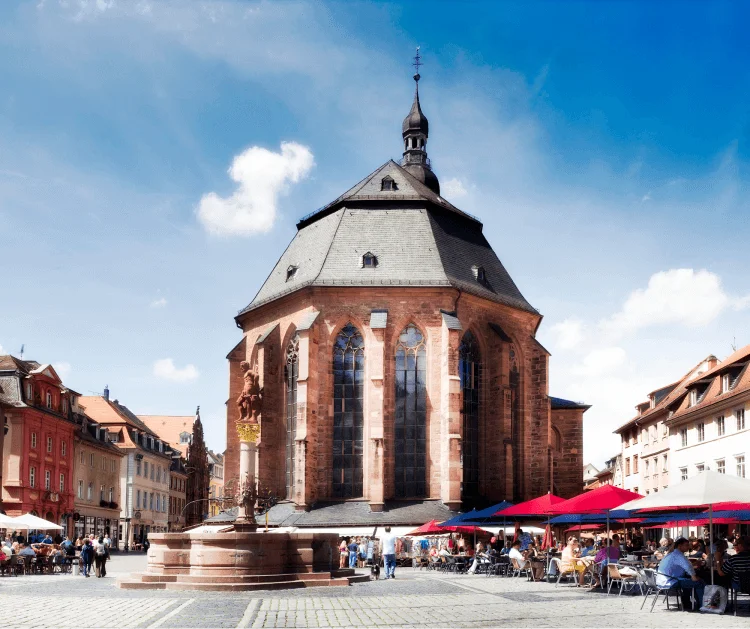
Where to Stay:
Opt for a hotel in the old town for easy access to the main attractions.
Wear comfortable walking shoes as Heidelberg's cobblestone streets can be tiring.
Day 2: Paris
In Paris for the day, at the Palace of Versailles now. Follow for photos and more, then we're going site-hopping around the city tomorrow.
Where to Visit:
Palace of Versailles: This vast palace, turned from a hunting lodge to the residence of the grandest king in the world, Louis XIV, is a monument to absolute power.
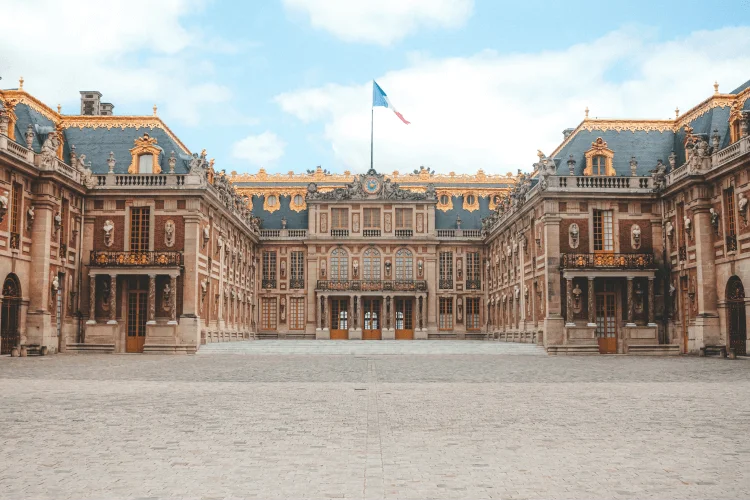
Walk through its extravagantly decorated halls, overflowing with works of art.
Hall of Mirrors: The most famous spot in the palace, and a stupefying experience in grandeur.
At the end of this room, the Treaty of Versailles that ended World War I was signed. The mirrors and chandeliers are a sight to behold.
Grand Trianon: A smaller palace on the grounds of Versailles, intended as a more intimate retreat for the king.
Its pale pink marble exterior and airy rooms provide a nice change of pace from the main palace.
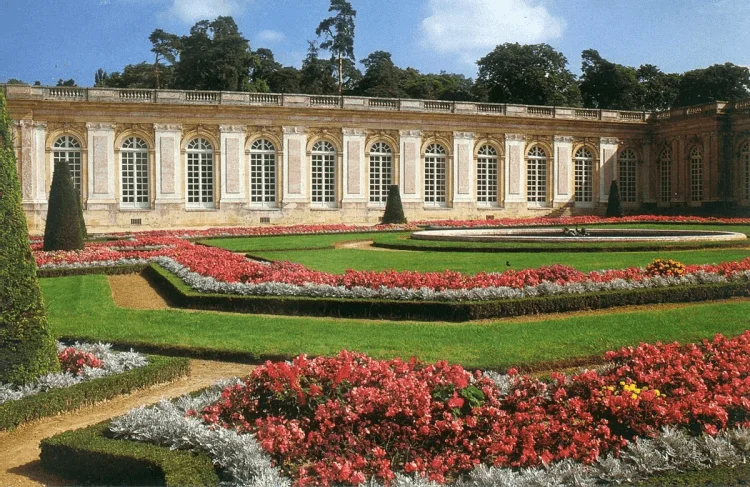
The Queen’s Hamlet: A whimsical retreat built for Marie Antionette, designed to look like a country village, complete with farm animals. Explore the Petit Trianon and Queen’s Hamlet for an insight into the queen's desire for simpler living.
Versailles Gardens: The meticulously landscaped gardens and grounds play host to beautiful fountains, sculptures, and the grand Orangery. A great place to spend a while walking around.
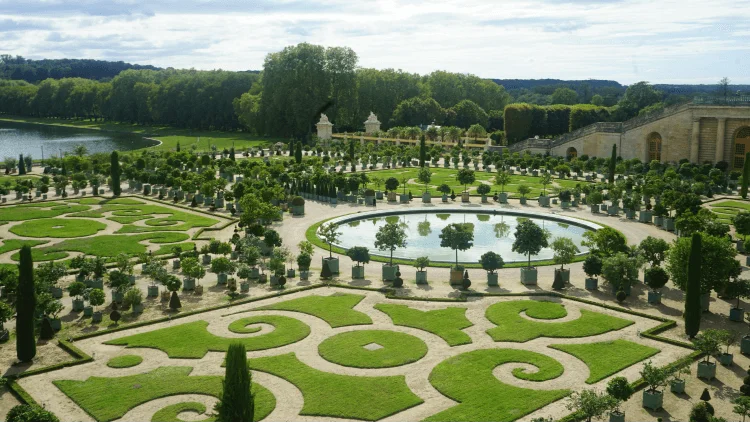
Where to Stay:
Choose a central hotel for convenient access to Versailles and other Parisian attractions.
Purchase tickets in advance to avoid long queues and consider taking a guided tour to fully appreciate the palace's history.
Day 3: Paris
Immerse yourself in everything from the Louvre to the Eiffel Tower today as you uncover Paris's cultural wonders. Then, it's more treading through the city's delightful districts and exploring its other most famous spots tomorrow.
Where to Visit:
Louvre Museum: A former residence to French kings, this is the world's biggest art museum, home to thousands of works including the Mona Lisa, Venus de Milo, and the Winged Victory of Samothrace.
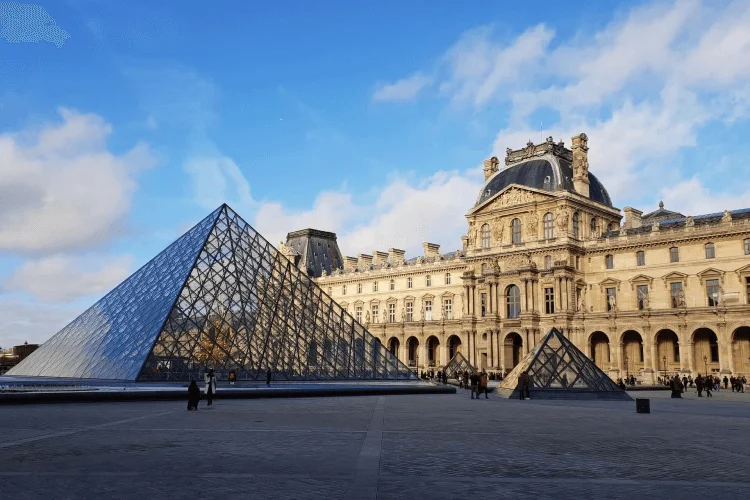
Eiffel Tower: Designed by Gustave Eiffel for the 1889 World's Fair, the Iron Lady has observation decks on multiple levels of its 324m height, with unparalleled views of the city.
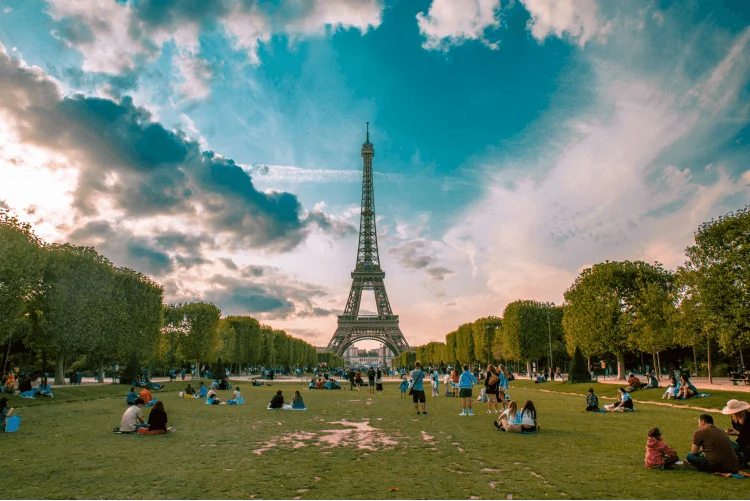
Tuileries Garden: Once the private garden of the Tuileries Palace, now long-demolished, this beautiful public park boasts statues, fountains, and meandering walkways.
Musée d'Orsay: Formerly a train station, the building now bustles with masterpiece works of Impressionist and Post-Impressionist art, ranging from Monet to Van Gogh to Degas.
Champs-Élysées: The iconic avenue, flanked with shops, theaters, and cafés, leads up to the Arc de Triomphe from the Place de la Concorde.
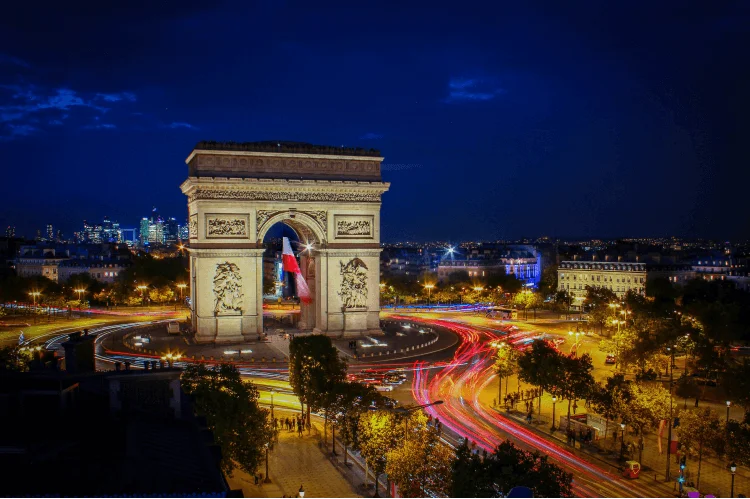
Where to Stay:
Continue staying centrally to easily access these attractions.
Start your day early to beat the crowds at the Louvre, and consider booking skip-the-line tickets.
Day 4: Paris
Cruise the Seine River and see all the sights today, then head to Rome tomorrow. It's a day spent getting more intimate with the beauty and history of Paris.
Where to Visit:
Seine River Cruise: A new perspective on Paris, floating past the Eiffel Tower, Louvre, and Notre Dame Cathedral. Many operators do dinner cruises with live music, for a perfect night aboard.
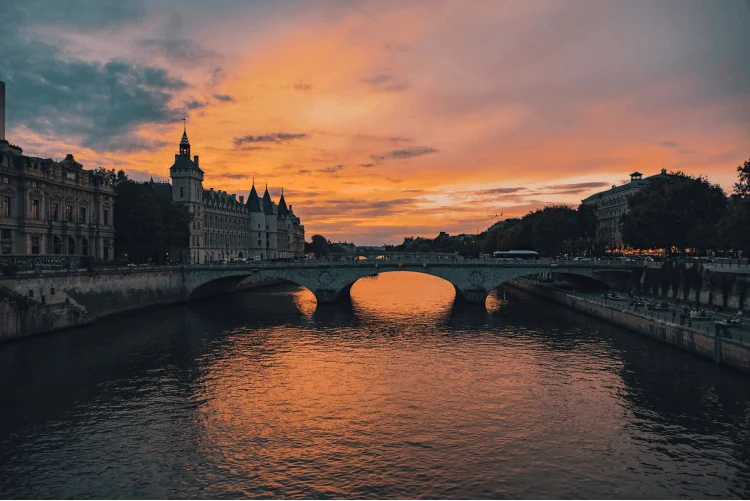
Arc de Triomphe: An arch commissioned by Napoleon to honor his army, the views from its top are unparalleled, and the sculptures and historical importance are mesmerising.
Notre Dame Cathedral: The tragic 2019 fire means restoration efforts are ongoing, but this Gothic masterpiece, with its rose windows and sculptures, remains a powerful link to Paris' heritage
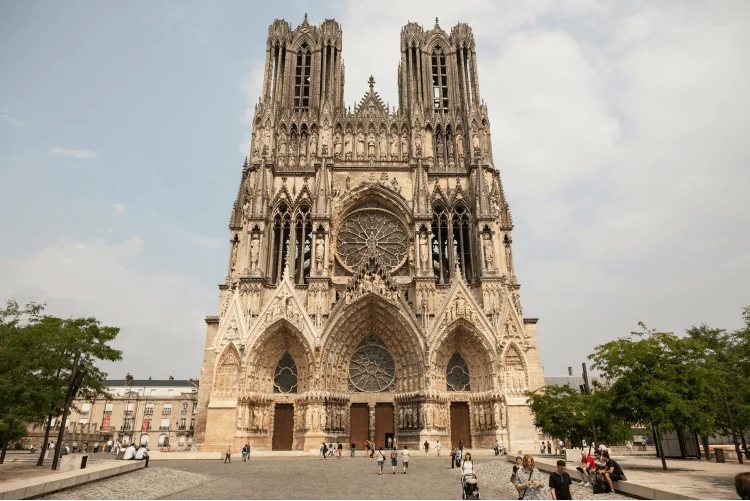
Sainte-Chapelle: The church is a gem of Gothic architecture, and famed for its stained glass windows, depicting biblical scenes in jewel tones. The building was built to house relics of the Passion of Christ.
Latin Quarter: The historic and bohemian district, around the Sorbonne University. Navigate its narrow streets packed with cafes and bookshops for a truer sense of life in Paris.
Where to Stay:
Paris has truly countless hotels, from quaint boutiques in Montmartre to luxury stops near the Champs-Élysées.
Getting to popular sites early may help you avoid the crowds, especially in peak season.
Wear comfortable shoes for ambling up and down the wide Parisian avenues.
Day 5: Rome
Start to explore Rome's historical and cultural wonders with the following sites, focusing on The Vatican.
Where to Visit:
Vatican Museums: Home to some of the greatest art collections in the world, with highlights such as Michelangelo's Sistine Chapel ceiling and the Raphael Rooms. A veritable feast of art and history.
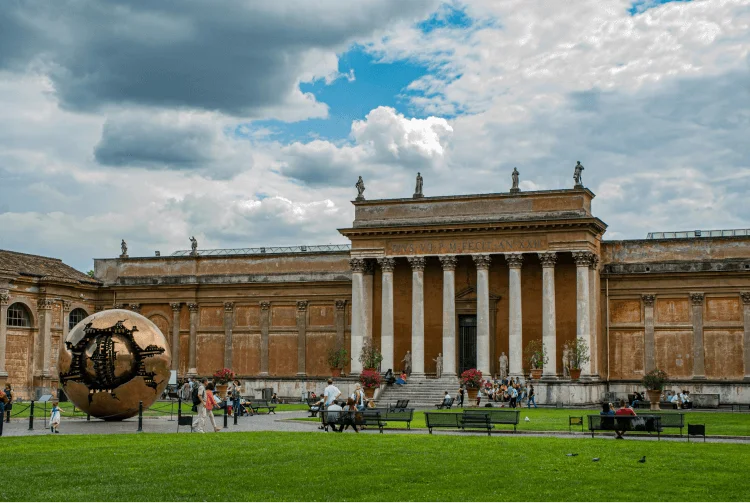
St. Peter's Basilica: The biggest church on the planet, and home to Michelangelo's Pietà and the incredible Bernini-designed baldachin. The sheer scale, beauty and magnificence is awesome.
Sistine Chapel: Famous for Michelangelo's ceiling frescoes and The Last Judgment, the walls offer other scenes from the Bible. Not to be missed for art and history fans.
Castel Sant'Angelo: Built as a mausoleum for Emperor Hadrian, this ancient tomb was later used as a papal fortress and prison. The museum showcases exhibits while the top offers 360 views.
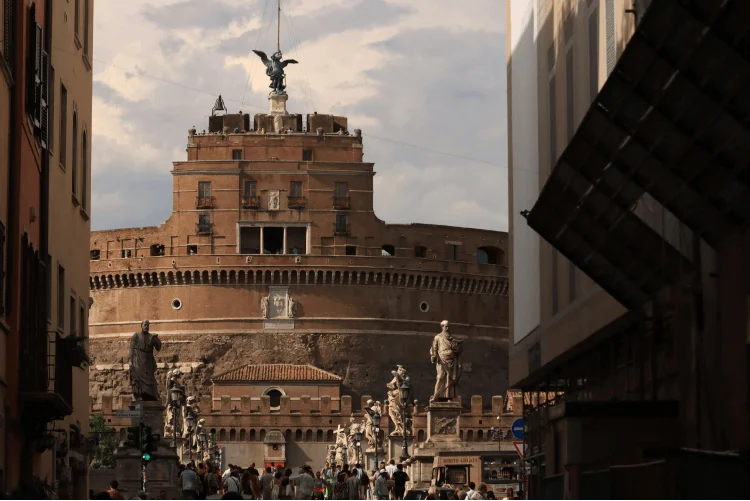
Piazza Navona: One of Rome's liveliest squares, known for its stunning Baroque architecture and fountains. A great place to stop, relax, and people-watch in the city.
Where to Stay:
Stay in the city center to be close to historical sites.
Wear modest clothing for church visits, book Vatican tickets in advance, and consider a guided tour to fully appreciate the sites.
Day 6: Rome
Stay on in Rome and see more of the ancient city before heading to Venice on Wednesday. It may be the Eternal City, but its history and beauty will still amaze you.
Where to Visit:
Pantheon: One of the best preserved ancient Roman buildings, this temple turned church is renowned for its domed roof and open oculus. Originally a temple to all the gods, it’s a wonder of ancient construction.
Roman Forum: The remains of the center of ancient Rome’s political and social life, with temples, basilicas and public spaces making for a tour of the city’s golden age.
Colosseum: The most famous of Rome’s amphitheatres, where the city’s bloody gladiatorial contests and public shows were held. One of the pinnacles of Roman architecture and engineering.
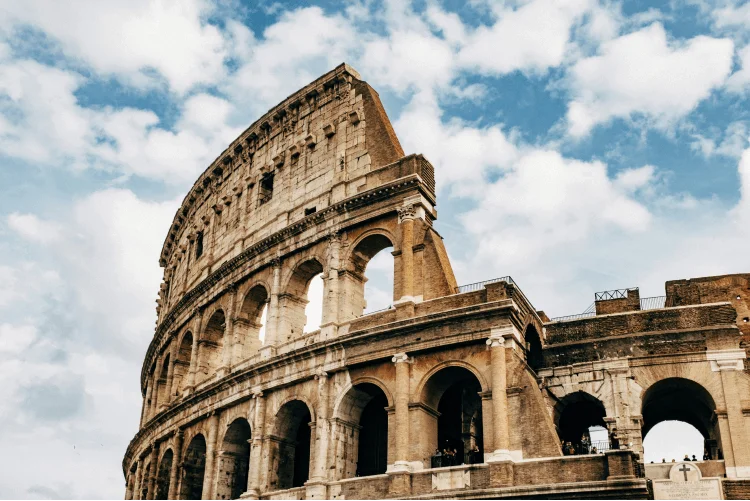
Trevi Fountain: According to local legend, throw a coin into the baroque masterpiece and you’ll return to Rome. It’s an enduring symbol of the city’s allure and beauty.
Piazza di Spagna: The Spanish Steps afford a good view of this bustling square, a popular meeting point famed for its sweeping steps and the surrounding historical buildings.
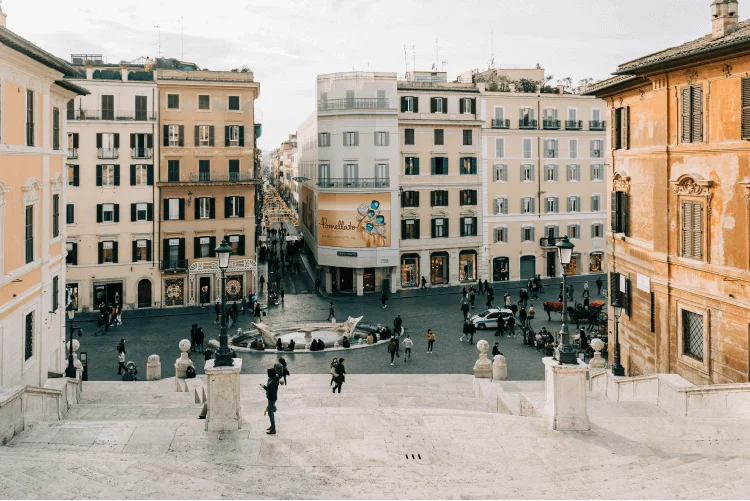
Where to Stay:
Choose a central location for ease of travel.
Book tickets for the Colosseum in advance to skip the line, and wear comfortable shoes for exploring the ancient sites.
Day 7: Venice
This is your chance to experience the magic of Venice's waterways and historic wonders. Today, we’ll check out some of the city's more secret spots and alluring ambiance.
Where to Visit:
Rialto Bridge: One of the most famous bridges in Venice, and as beautiful in its architecture as the views it offers. Popular photo op spot.
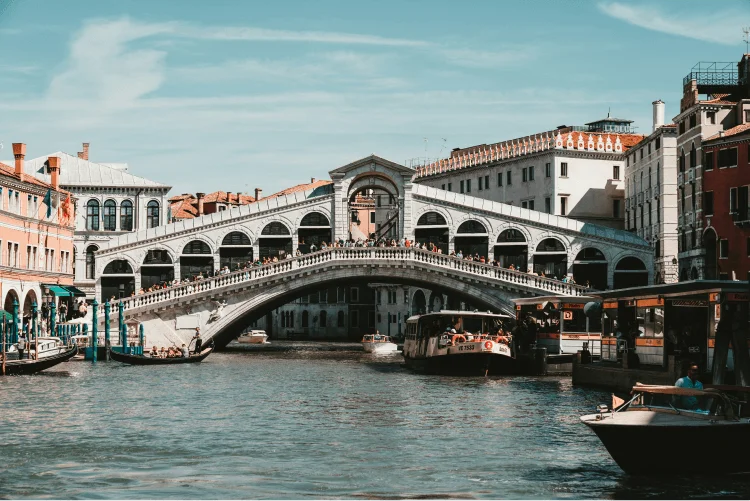
St. Mark's Square: The literal and figurative center of Venice, home to the fantastic St. Mark's Basilica and the historic clock tower. The pulsating heart of the city, socially, religiously, and poltically.
Bridge of Sighs: Bridge connecting the Doge's Palace to the prison, the name comes from the sigh of the condemned glimpse of Venice, and is groundingly fascinating.
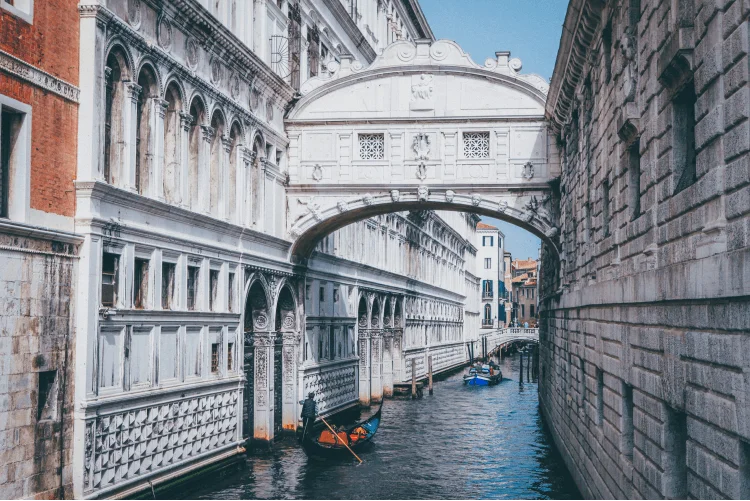
Academy Bridge: Unassuming wood bridge linking Sestiere San Marco to the Accademia Gallery. Great views of the Grand Canal, the perennial favorite for photographers.
Libreria Acqua Alta: The most magical bookshop you’ll see, with bathtubs and gondolas repurposed to store books safe from acqua alta.
Where to Stay:
Stay in a hotel with easy access to the main attractions.
Take a gondola ride for a unique perspective of the city, and consider visiting the islands of Murano and Burano.
Day 8: Milan
Milan is a city where the past–of which a great deal remains–is artfully woven with the present, blending cultural heritage, historical sites and modern satires.
What to Visit:
Milan Cathedral: The Duomo is one of the most impressive sights in Europe, a Gothic cathedral with a rooftop that offers unparalleled views of the work below, and detailed stained-glass windows inside.
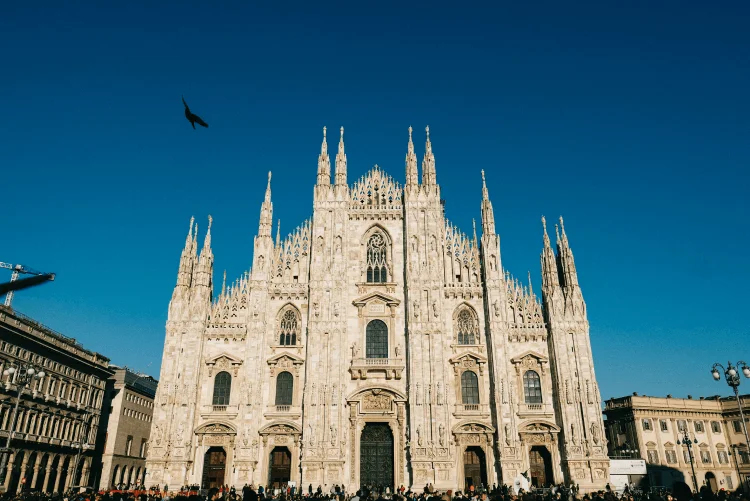
Galleria Vittorio Emanuele II: This historic shopping arcade is one of the main attractions in the city, home to incredible mosaics and architectural features, as well as a stunning glass and iron roof. Luxury shopping and classy cafes abound.
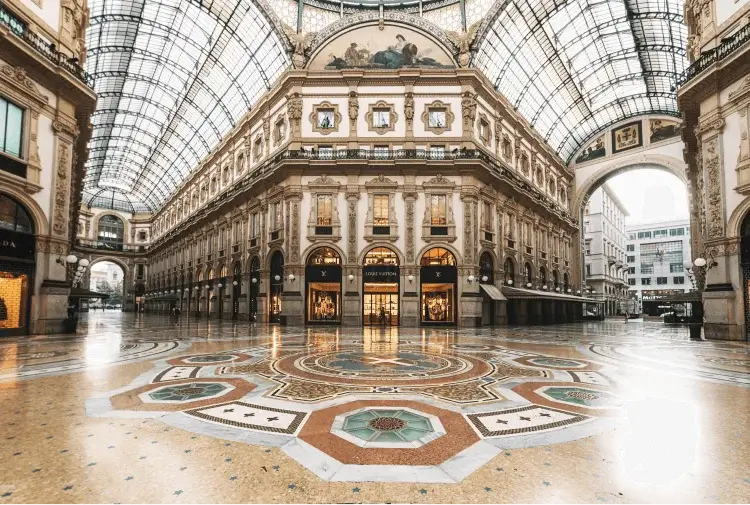
La Scala: The world-renowned opera house has hosted performances by some of the biggest names to have graced the stage.
Get a taste for the grand experience with a tour of the museum during the day, or book in for an evening's culture.
Sforza Castle: Leonardo once worked here, and there are several museums within the fortress with works of art and more artefacts from Milan's tumultuous past.
Wander the inner courtyards and consider visiting the museums, then lose yourself in the surrounding gardens.
Navigli District: Milan's best-known district for canals, Navigli is where to find the city's hippest locals.
During the day it's ideal for exploring its shops, but once the sun goes down the area becomes Milan's nightlife hub, with bohemian bars and restaurants, and artist's studios.
Jump on a canal cruise, browse micro stores, and –naturally–dine at the neighborhood's myriad trattorias.
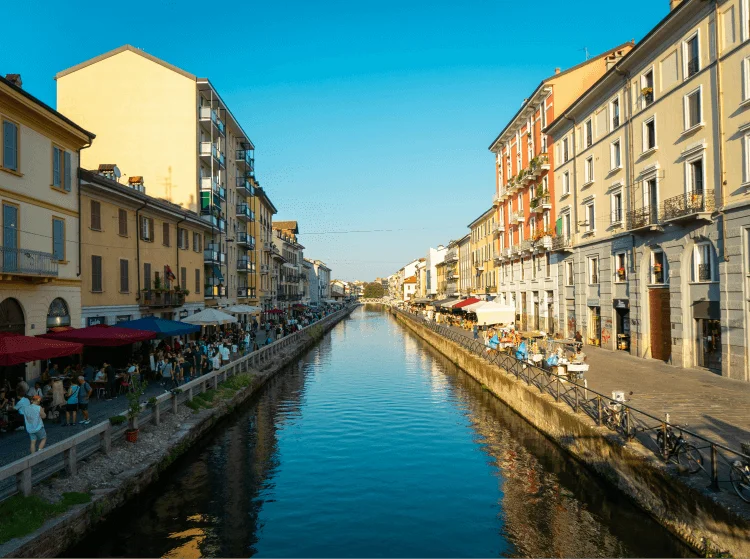
Where to Stay:
Select accommodation near the train station for convenience.
Enjoy shopping in the fashion capital before heading to Switzerland, and try the local cuisine, including risotto and panettone.
Day 9: Interlaken
Experience the majesty of the Swiss Alps in Interlaken today, then join us tomorrow as we journey on through Switzerland’s awe-inspiring landscapes.
What to Visit:
Jungfraujoch: The “Top of Europe” boasts views of the Aletsch Glacier and surrounding peaks. Arrive by train at the highest railway station in Europe and take your perfect panoramic shot.
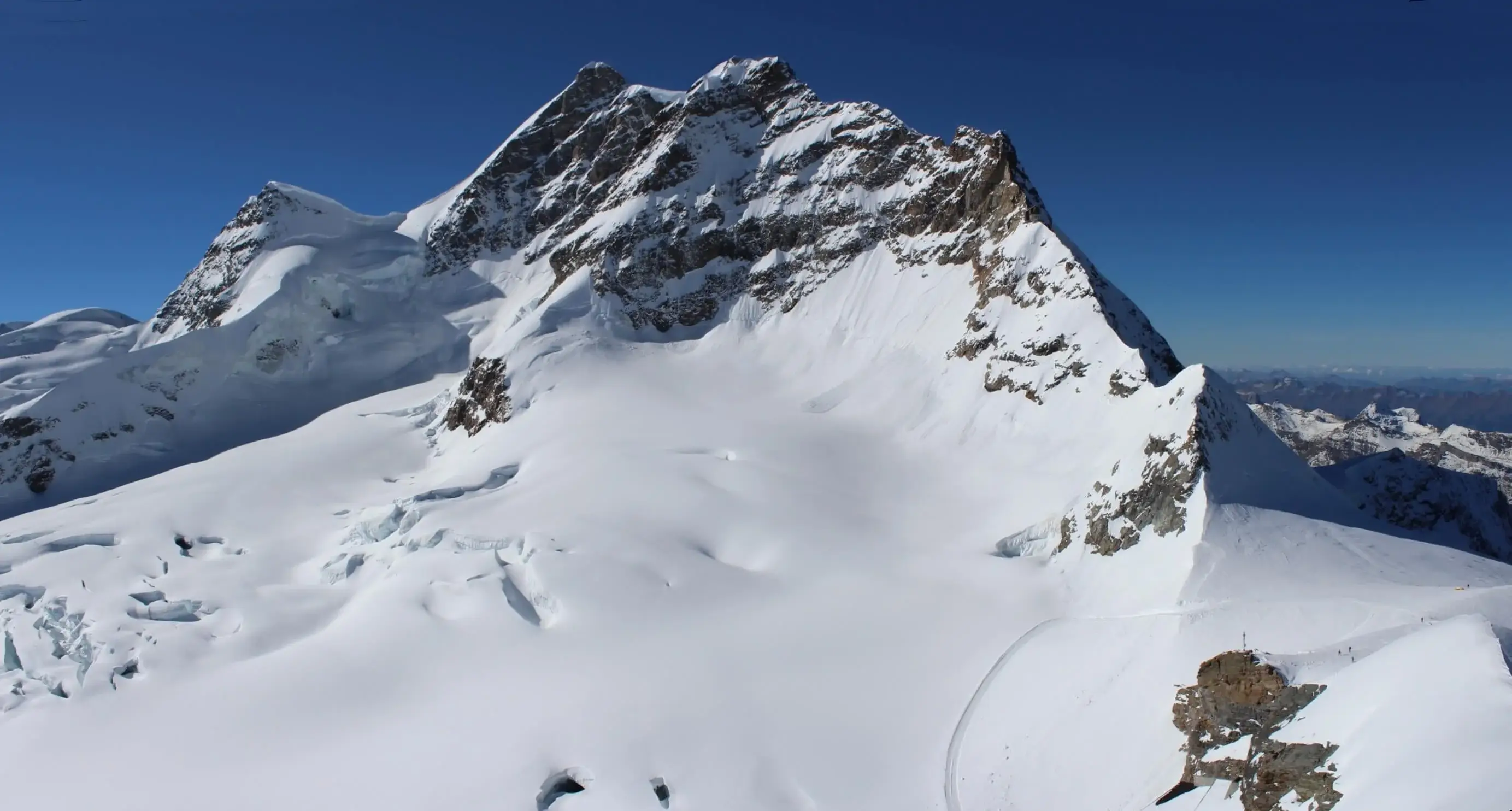
Harder Kulm: Panoramic views of Interlaken and the mountains await at this vantage point. The funicular ride up is half the adventure but the views from the top are worth it.
Lake Thun: A boat excursion on this beautiful lake reveals charming villages and the castles that line its banks. Relax and soak in the Swiss serenity.
Schynige Platte: Ideal hiking country, offering views, alpine gardens, and scenic trails through nature to enjoy the mountains from.
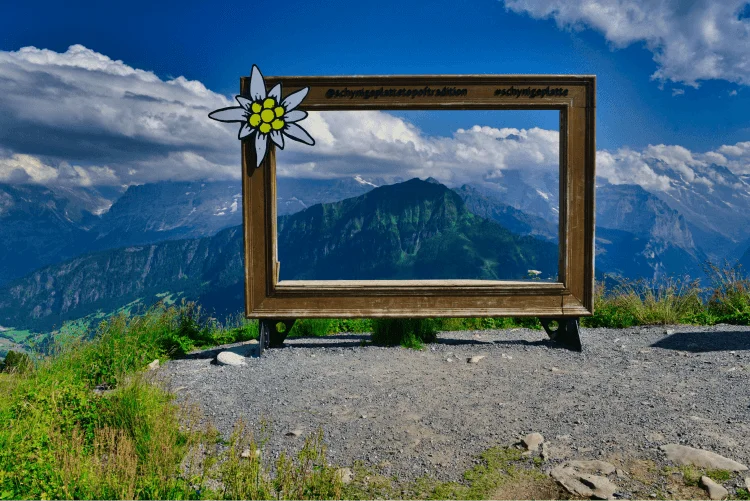
Hohematte Park: The central park boasts mountain views and opportunities to see paragliders gently alight. A pleasant spot for relaxing and taking in the local scene.
Where to Stay:
Stay in a hotel with easy access to train routes.
Dress warmly as the altitude can be cold, and consider purchasing a Swiss Travel Pass for unlimited travel on the Swiss Travel System network.
Day 10-11: Stuttgart
Day 10: Take in the culture and history of Stuttgart, rich in sights, then rest up – for tomorrow we reach our final stop!
Where to Visit:
Mercedes-Benz Museum: An exploration of the famed automaker's history, development, and design evolution. An absolute must for car fans or lovers of history.
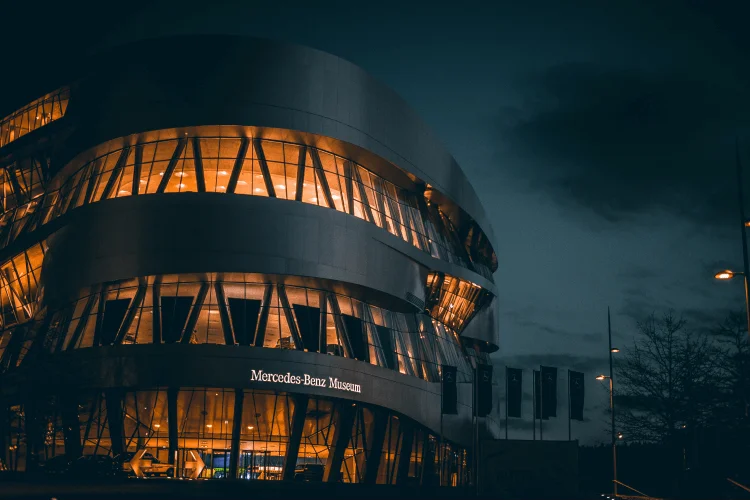
University of Hohenheim: With sprawling lawns and a diverse range of plants in the botanical garden, this campus is as lovely as it is educational.
Schlossplatz: The city's central square, bordered by significant city landmarks such as the Old Castle and New Palace.
Wilhelma Zoo: The zoological-botanical garden is home to thousands of plants and hundreds of animals, all set amidst beautiful architecture.
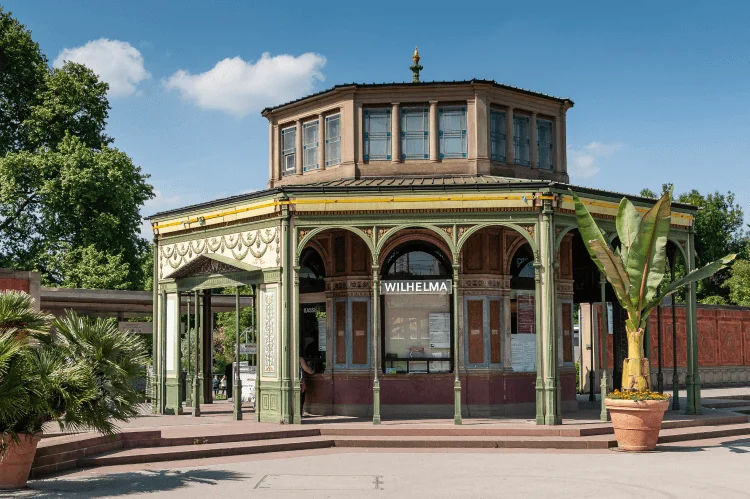
Königstraße: Running all the way along Stuttgart's main shopping street you'll find shops, cafes and more. Visit to shop, eat and people-watch in the heart of Stuttgart.
Day 11: On your final day in Stuttgart, we have a mixture of historical intrigue and modern marvels to explore before you leave – once more, until tomorrow.
Where to Visit:
Old Castle (Altes Schloss): A historical castle with a museum showcasing artefacts from history of the region. The castle itself and the items within are equally fascinating.
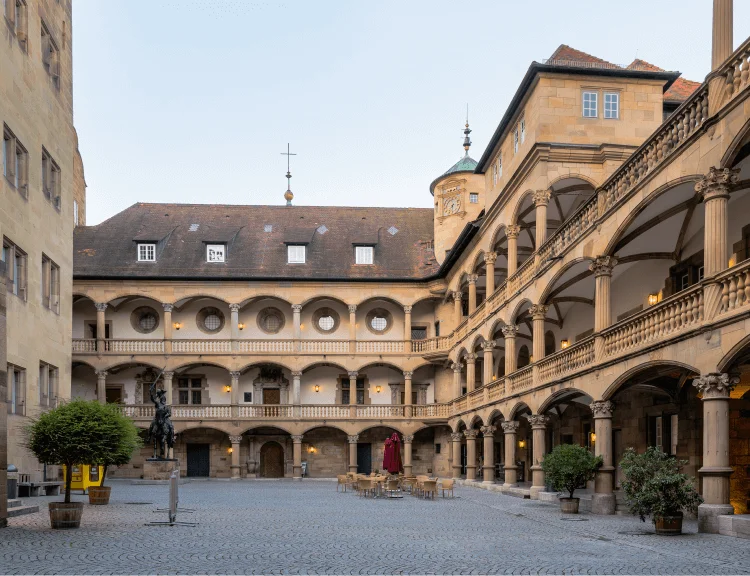
Stuttgart City Library: The all-white interior and modernist design of this building are as impressive as its collection. It’s a sanctuary in which to enjoy the written word.
Staatsgalerie: Art spanning from the 14th to the 21st century is collected in this world-class museum and gallery. A must-see for art enthusiasts.
Killesberg Park: This vast city park boasts beautiful gardens, an observation tower with views across Stuttgart, and a mini railway, perfect for a leisurely day surrounded by nature.
TV Tower: Once the world’s first TV tower constructed of reinforced concrete, this offers a bird’s eye view of the Stuttgart area from the vantage of its observation deck.
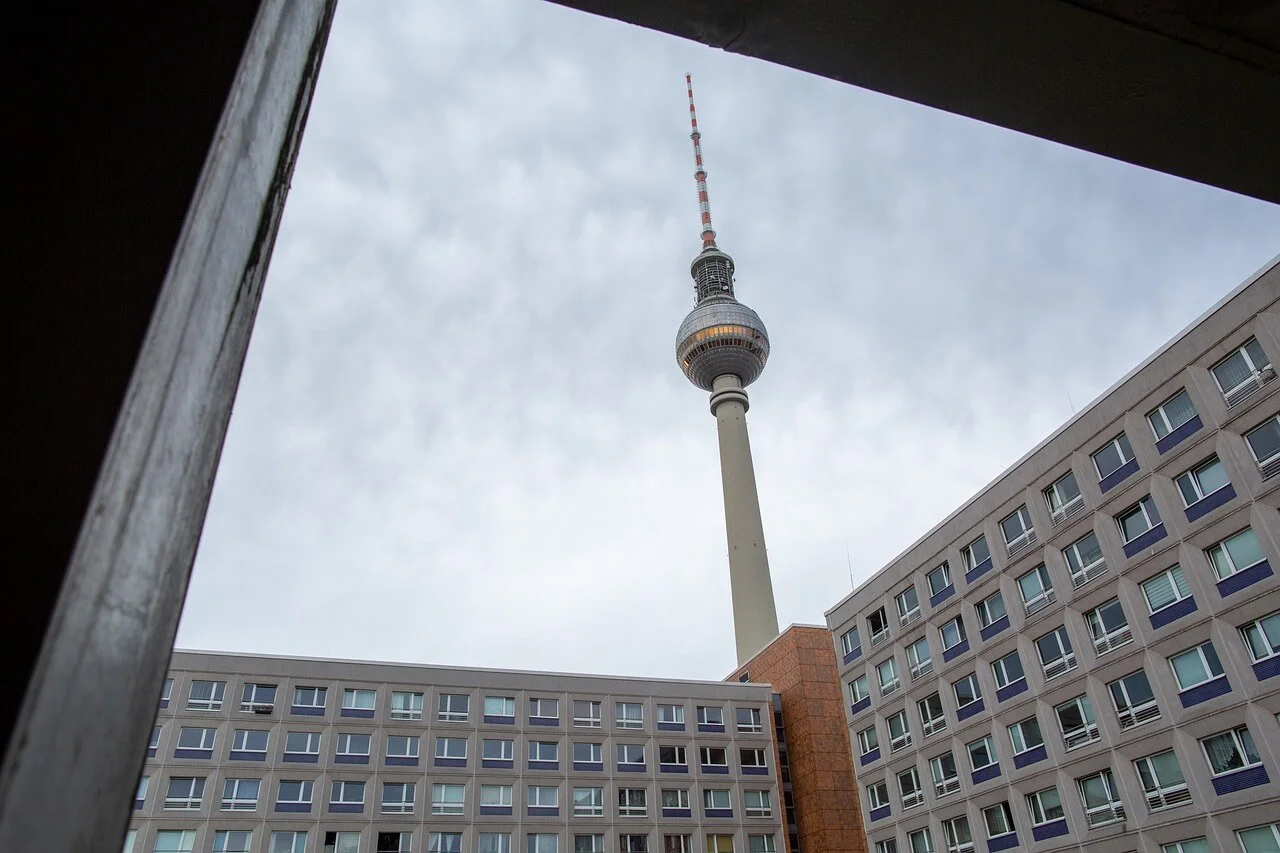
Where to Stay:
Continue staying centrally for easy access to transportation.
Ensure you have all travel documents ready for departure, and enjoy a leisurely final day in the city.
How to Shorten/Extend the 11-Day Route:
For a shorter trip, consider reducing time in Paris or skipping Milan.
For an extended trip, add visits to nearby cities such as Florence or Munich.
3. Top 10 Foods and Drinks in Europe
Now, it wouldn't be a trip to Europe without sampling the delicious array of foods the continent has to offer. European food is as diverse as the countries themselves, with history and flavors differing from nation to nation.
European dishes encapsulate cuisine and culture, from rich and hearty stews to delicate pastries, strong cheeses to fine wines, and everywhere in between.
1. Croissant (France)
A buttery, flaky pastry which has become a mainstay for French breakfasts. Often enjoyed with a cup of coffee, they are made from layered dough for a rippled effect in the final product.
2. Paella (Spain)
This beloved rice dish hails from Valencia and is typically flavoured with saffron, cooked with an array of seafoods, vegetables, and sometimes meat. It's a dish often enjoyed at a communal table, or during festive events.
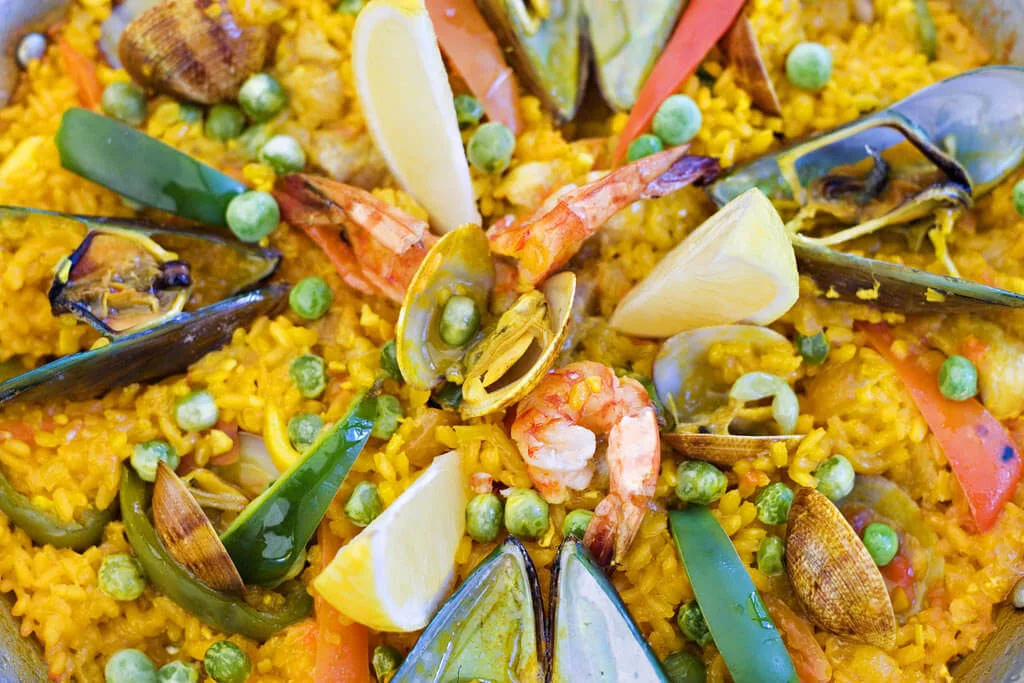
3. Piza Margherita (Italy)
This classic Neapolitan pizza is topped simply with tomatoes, mozzarella cheese, basil, salt, and and olive oil. It's as traditional a representation of Italian cuisine as you can get – and tasty too!
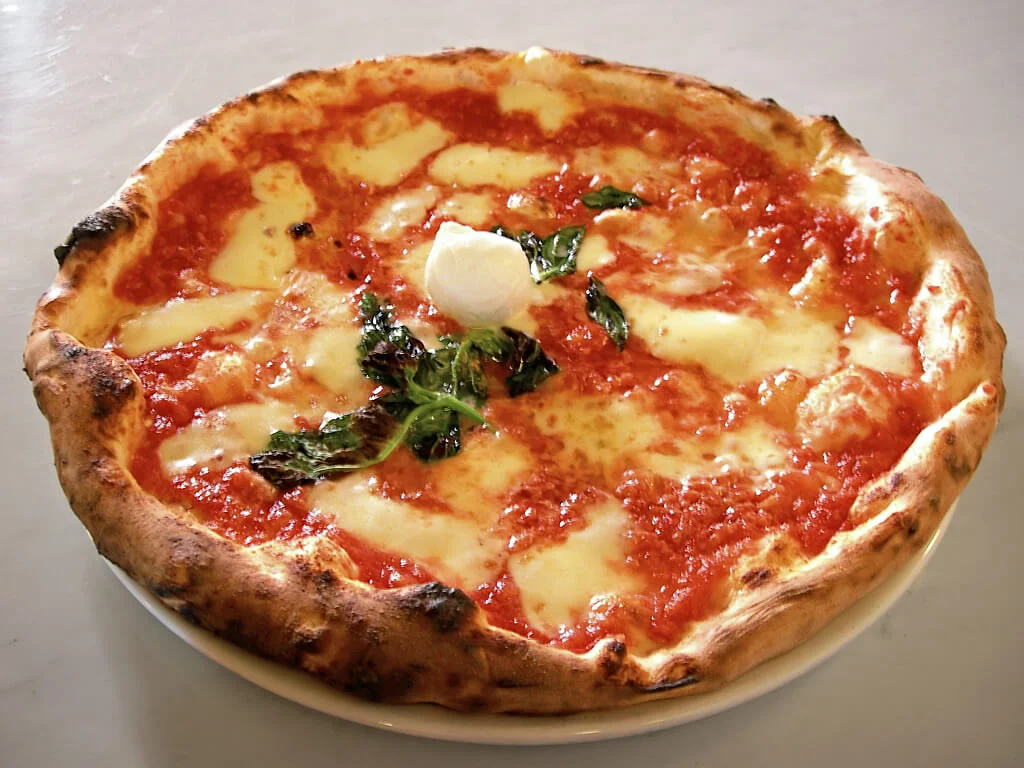
4. Wiener Schnitzel (Austria)
A filleted and breaded veal cutlet, fried, and commonly served with lemon wedges and a side of potato salad or lingonberry sauce. The schnitzel is a national treasure of Austrian cooking.
5. Goulash (Hungary)
A thick and hearty stew, typically made with beef, onions, peppers, paprika – a quintessentially Hungarian spice – and other vegetables. It's a new level of comfort food.
6. Belgian Waffles (Belgium)
Delicate and crispy waffles, served with cream, berries, or syrup. They can be eaten at any time of day – as lunch, dinner, even as dessert!
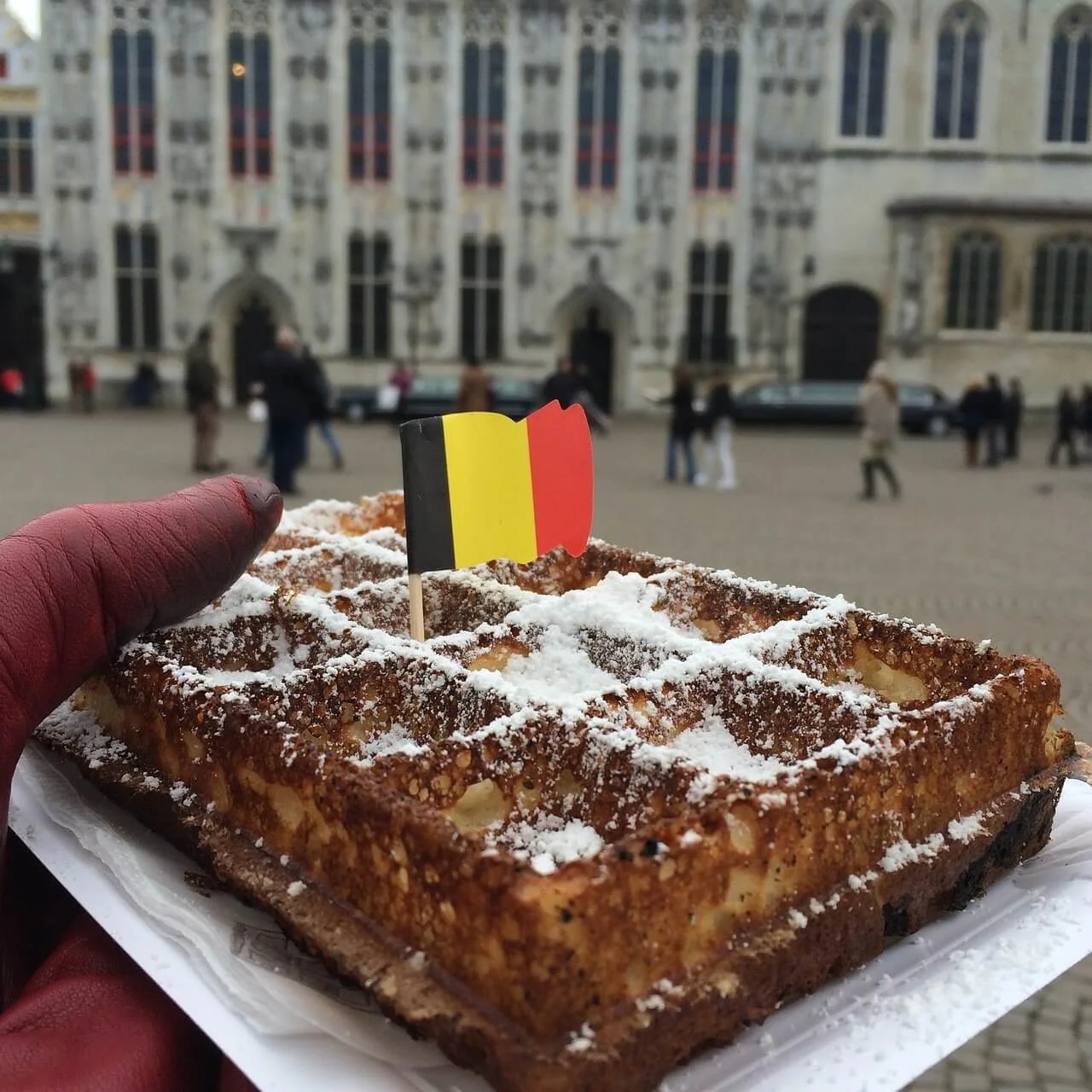
7. Bratwurst (Germany)
Grilled sausages of pork, beef, or veal, seasoned with different herbs and spices. Serve them with a crusty bread roll and mustard for maximum impact beer snack!
8. Haggis (Scotland)
Cased in a sheep's stomach, haggis is a savoury pudding made from sheep's pluck, oatmeal, suet, spices, and salt. It's best served with neeps and tatties (turnips and potatoes).
9. Baklava (Greece)
This sweet dessert is made of thin filo pasty layers, crammed with chopped nuts, and drizzled with honey or syrup. The result is sickly sweet, crunchy and gooey all at once.
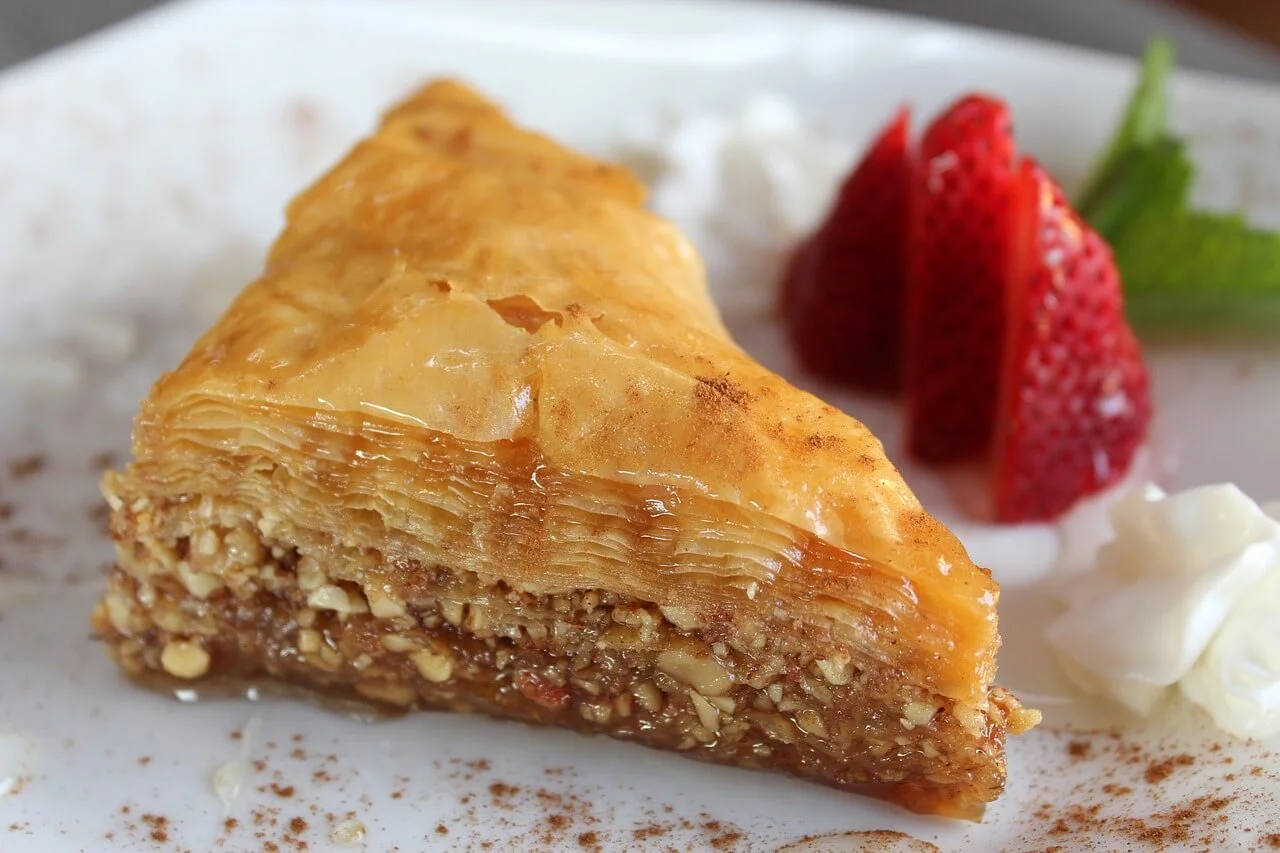
10. Fish and Chips (England)
Deep-fried battered fish and thick-cut chips, served with malt vinegar and/or tartar sauce. Classic, iconic, and delicious!
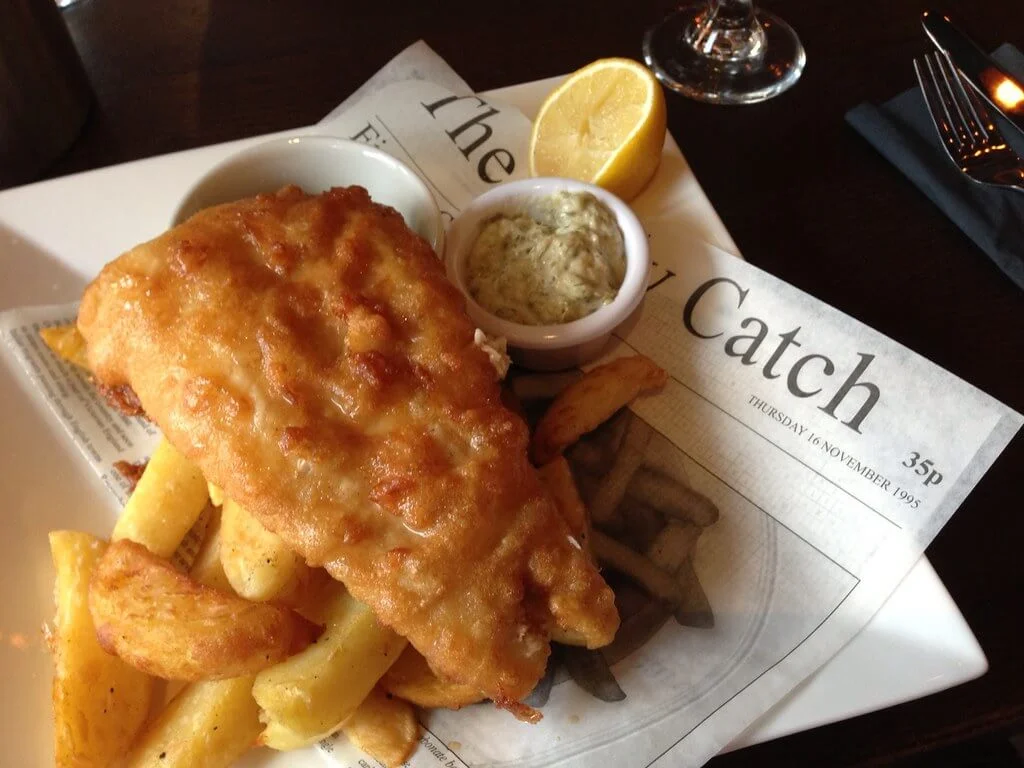
4. Additional Tips for Traveling in Europe
Packing the Basics
When packing for travel in Europe, opt for versatile clothing that suits a range of weather conditions and cultural venues. You'll definitely need comfy walking shoes, a light rainproof jacket, and layers to accommodate temperature shifts.
Remember travel-sized toiletries, a universal plug adapter, and any necessary medications. A small rucksack can be useful for days on the hop.
Cash, Local Payment Apps and Transport Apps
While credit cards are widely accepted in Europe, it's a good idea to carry some cash for smaller purchases and rural areas.
Payment apps – such as PayPal, Revolut, or even city-specific public transport apps like Citymapper – are commonly used in Europe and can offer discounts.

Europe Citymapper App
Etiquette and Custom
Knowing how to act locally is essential to a respectful and enjoyable trip. A simple "Bonjour" in France, "Guten Tag" in Germany, or their local equivalent can go a long way.
Always say "please" and "thank you," and be respectful of local norms, such as covering up and keeping noise levels down.
Getting Around
Europe boasts a range of transport options, which makes getting around, both within cities and between them, a breeze. Trains are excellent for travelling between cities, offering a mix of efficiency and picturesque service.
Buses and trams are best for exploring a particular city. Consider a Eurail Pass for unlimited train travel across multiple countries, or make use of bike-sharing schemes that are found in many cities.
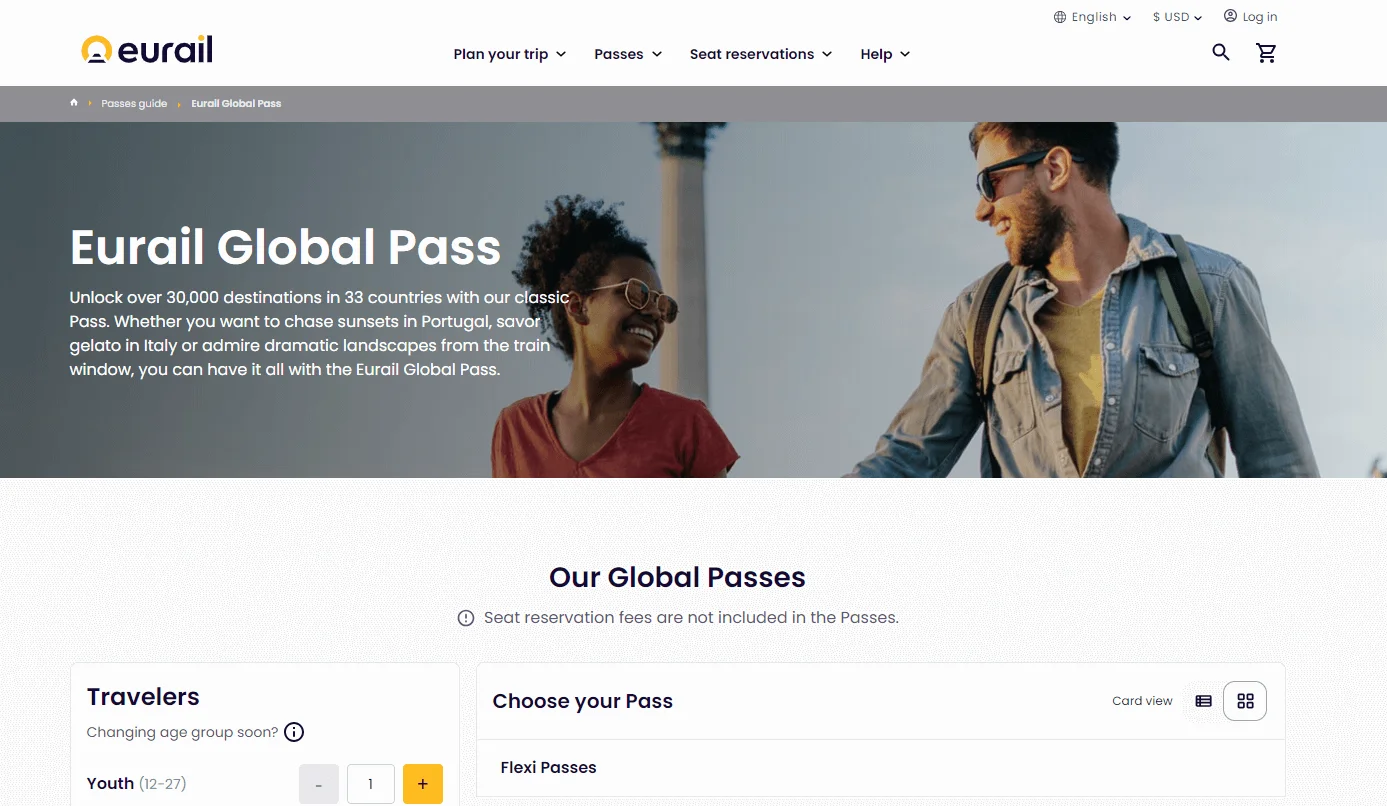
Hiring a Car or Scooter
If you plan to explore less-frequented locations, hiring a car or a scooter can be a great way to sightsee at your own pace.
However, be aware of local road laws, driving conditions, and parking. In areas where scooter rentals are available, always helmet up, and have an international driver's permit, if needed.
Communication: Language Hacks
While English is commonly spoken in most places, learning a few phrases of the local language can be rewarding – and demonstrate your respect for local culture.
"Hello," "please," "thank you," "where is," and "how much?" are useful starters that can help you find common footing. Many locals appreciate the effort, even if conversation quickly reverts to English.
Summary
And that’s the end of our amazing 10-day jaunt through Europe! I hope our schedule and advice helps you in planning your own unforgettable experience.
By keeping to the path we walked, you’ll hit some of the best attractions and destinations Europe has to offer.
Have an amazing trip, and I hope some of our suggestions make yours as memorable as ours was. Happy travels!
